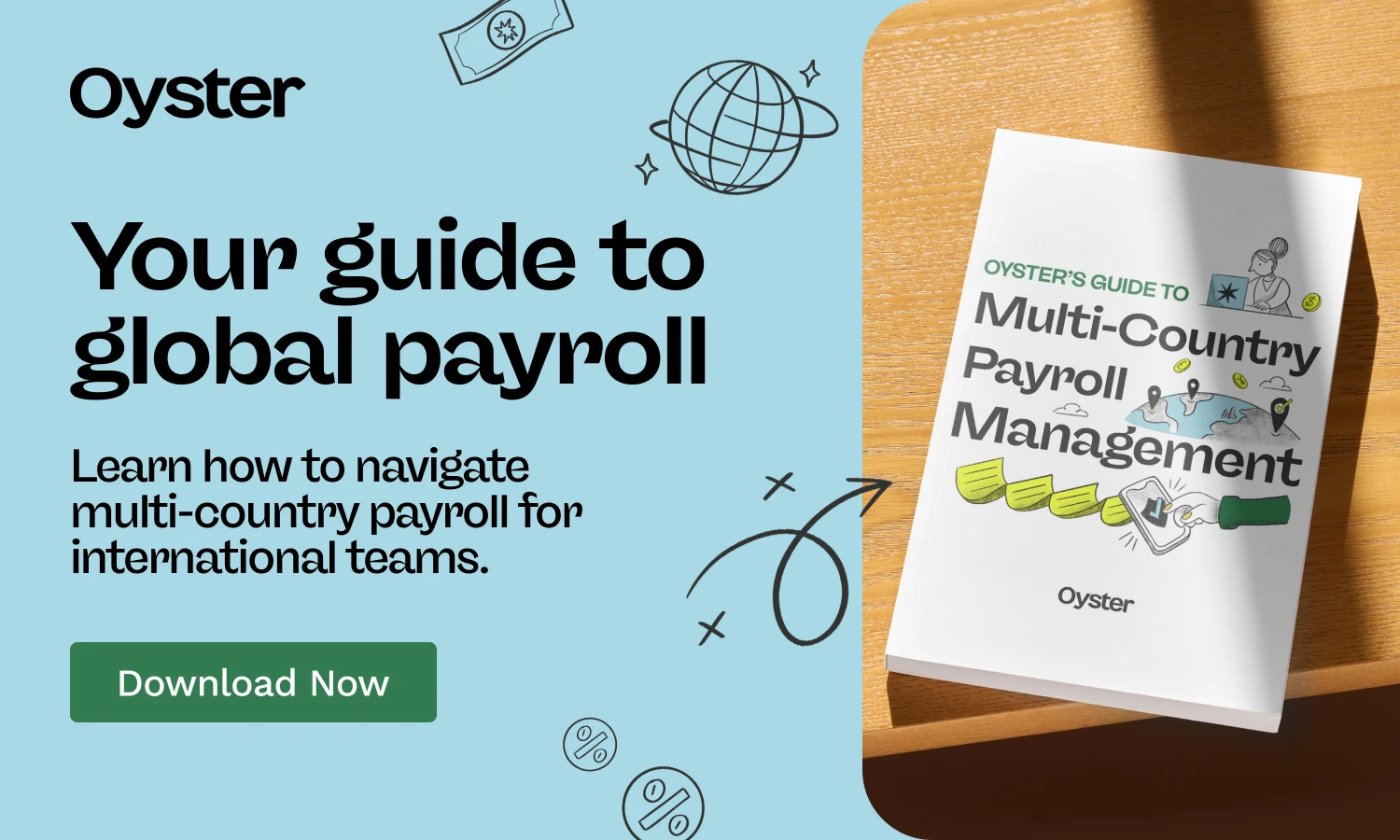What is global payroll? A concise guide plus popular payroll solutions

Global payroll
You want to find the best talent for your business. And with today’s recruitment technology, it’s easier than ever for your search to take you around the globe. But bringing on employees from other countries complicates compensation. For one thing, managing global payroll means your HR department has to handle cross-border payment and compliance processes.
In this guide, you’ll learn what global payroll is and the challenges that come with it. We’ll also cover international payroll solutions that allow your company to pay your team members—no matter where they live.
How does global payroll work?
Global payroll is the process of managing compensation, tax obligations, and benefits administration for international employees.
Employers with distributed teams have extra work on payday. Running payroll locally is more straightforward than globally because international payments involve sending funds in different currencies across borders and complying with labor laws that vary from one jurisdiction to another.
The following are some of the complex tasks involved in running global payroll:
- Collecting employee data: You must have an employee’s deposit information before you can make payments. HR teams can securely collect this information on a payroll processing platform, where employees privately enter sensitive data. And when payday rolls around, your People Ops team must also gather invoices or employee hour reports to know how much to pay.
- Ensuring local compliance: Global companies need to comply with international employment laws relevant to payroll like overtime and holiday pay.
- Calculating wages, employee benefits, and taxes: Every country has different tax structures and employee benefit programs. People teams managing a global workforce must know how to withhold taxes and apply benefits correctly for different regions. This also involves covering commissions, expenses, and time-off.
- Managing currency conversions and disbursements: Employees think in their local currency and want to receive payments that don’t fluctuate if exchange rates do. Companies doing international payroll should set clear salary expectations in people’s home currencies. Businesses must also have secure and efficient processes for transferring funds between countries so payments arrive safely and on time.
- Providing payslips and reporting payroll: HR teams must provide payslips for employees and keep internal payroll records for budgeting and tax reporting purposes.
Common challenges in global payroll
Payroll processing is complex, even when you work exclusively with local employees. Going global only adds complications. Not only do you need to know foreign labor and tax laws inside out, but your team also must consider the following challenges.
Compliance with payroll and tax regulations
When running payroll across borders, every country has its own rules for pay frequency, tax withholdings, and reporting requirements. What’s standard in one region could be noncompliant in another, so understanding these differences is key to avoiding penalties and ensuring that employees get paid accurately and on time.
Protecting data
Different regions have varying laws around collecting, storing, and processing sensitive employee data. When running global payroll, your company must handle and process employee data in compliance with all applicable data privacy and protection laws, such as GDPR, SOC II, and others. Being compliant means ensuring that your payroll software, sub-processors, and staff involved in payroll processing always prioritize data security and privacy.
Labor-intensive payroll admin work
Conducting global payroll is task-intensive since it involves collecting information, tracking expenses, monitoring time off, applying policy changes, validating data, reconciling reports, and more. These tasks are crucial for ensuring accurate and timely payroll, but they can be time-consuming and overwhelming for busy People teams to manage in-house.

Global payroll solutions to consider
There’s no one right method for running payroll globally—each company must assess its needs and know-how before choosing an approach. This said, some payroll systems—like those that require People teams to become experts on tax regulations—are trickier to navigate than others.
The following are different options for handling global payroll:
Running payroll in-house
For the in-house global payroll model, your HR and payroll teams must process payroll worldwide. This entails researching compliance considerations like labor laws and payroll regulations, and knowing how to apply benefits and tax withholdings correctly. In addition, your in-house team will have to adopt a suite of tools for payroll cycle management, time tracking, and payroll processing.
The in-house method requires significant time and resources, as your HR and payroll teams need to learn about other countries’ laws. Plus, there are many risks: An accidental omission can quickly spiral into an undesirable tax or legal issue.
Using multiple local payroll providers
Companies looking to hire globally might work with multiple local payroll providers, one for each country or region where they have employees. While local payroll providers can ensure compliant payroll processing in each location, this approach requires managing multiple vendors, systems, and processes, which can quickly overwhelm your HR team.
Using a global payroll provider
A third option is to use a global payroll provider like Oyster that has the local infrastructure to process payroll compliantly across countries and jurisdictions around the world. This approach helps you avoid juggling multiple providers resulting in fragmented and inconsistent processes. Instead, you can view and manage payroll for your global team from a single platform, ensuring more streamlined operations for your HR team and a consistent experience for your employees.
Tips for choosing a global payroll provider
Employing an international workforce is no easy feat. Fortunately, companies can team up with a professional payroll service provider that takes over this expert-level work and makes sure employers stay compliant.
Here’s what to look for if you’re considering using an international payroll provider:
- Country-specific expertise in running payroll: Consider payroll companies that know how to effectively handle payroll in the countries they’re covering.
- Up-to-the-minute compliance support: Letting compliance questions go unanswered is a considerable risk. Look for global payroll providers with a dedicated support team that can provide updated guidance on changing compliance obligations.
- Excellent data privacy and security standards: Your payroll provider should follow zero-trust data privacy practices throughout the entire employee life cycle, from the initial onboarding process to a secure, compliant offboarding. Use a payroll solution that implements GDPR standards, encrypts data, and allows you to modify privacy controls.
- Transparent pricing: Reputable payroll providers offer transparent pricing so you know what you’re getting. Before working with a payroll service, understand how much you’ll pay, when, and how many employees your package covers.
- A system that integrates with your HR tools: Avoid the hassle of training your HR team on entirely new tools by finding a payroll solution that plugs into your existing ones. Oyster integrates with dozens of platforms, from Slack and Zapier to QuickBooks and Expensify.
- An excellent employee experience: Choose a reliable payroll management service that protects employee data and makes sure everyone gets paid on time—no matter the location. Better yet, use a payroll provider that provides personalized support not just to HR teams but employees, too.
How a global payroll solution like Oyster can help
Among the many options for payroll software and global workforce management services, Oyster stands out.
As a trusted global payroll provider, Oyster diligently performs local compliance monitoring and provides HR teams with consolidated payroll reporting across countries. Manage payroll flawlessly with Oyster’s accurate and on-time payments in various currencies. You’ll also improve your workforce experience with Oyster’s employee self-service portal, which lets people access pay stubs and request time off independently.
Get started with Oyster today, and enjoy hassle-free global payroll.

About Oyster
Oyster enables hiring anywhere in the world—with reliable, compliant payroll, and great local benefits and perks.

Related Resources


.avif)
.avif)
.webp)






